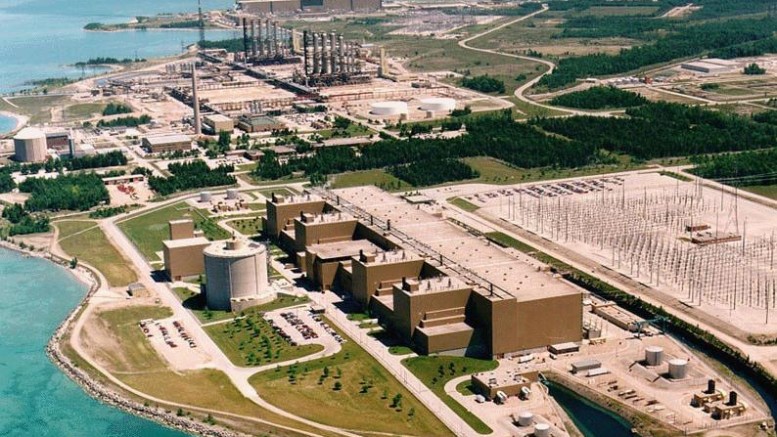Saskatoon-based uranium miner Cameco (TSX: CCO; NYSE: CCJ) earned $131 million in the first quarter, helped by the sale of its interest in Bruce Power Ltd. Partnership.
The earnings per share were 33¢ above the 2¢ recorded in the same quarter last year, as the major gained $127 million from selling its 31.6% stake in the Ontario-based Bruce Power nuclear facility.
After removing one-time items, including an $18-million fee for prematurely ending a toll agreement to convert uranium for Springfields Fuels, adjusted earnings were $36 million, or 9¢ per share. This missed the analyst consensus of 11¢ per share, but surpassed the adjusted $27 million, or 7¢ per share, earned a year ago.
Total revenue was $419 million, falling below the consensus expectation of $485 million, despite strong earnings from Cameco’s uranium division.
Uranium revenues were up 41% to $348 million on the back of higher sales volumes and better realized prices, partly making up for the weaker performances from the company’s fuel services and Nukem segments. The segments pitched in combined revenues of $72 million, down from $197 million a year ago.
On a positive note, uranium sale volumes increased 35% to 6.9 million lb., offsetting lower uranium production.
“The 35% bump in sales is a bit of a change from last year when deliveries in the first quarter were lighter than in the previous years, but the cause is the same,” said CEO Tim Gitzel on a conference call. Cameco’s customers decide when in the year to receive their deliveries, with the company receiving more-than-usual requests early this year, he explained.
Also boosting Cameco’s uranium segment was the weakening Canadian dollar, which contributed to a 5% increase in the $50.58 per lb. average uranium realized price, up from $48.25 per lb. earlier.
Quarterly output sank 3% to 5.7 million lb. U3O8, as production plunged at Cameco’s wholly owned Rabbit Lake operation in Saskatchewan, due to declining ore grades and the timing of production stopes. But that was partly offset by higher production at its nearby 70%-held McArthur River mine.
The Canadian Nuclear Safety Commission has also approved a licence production increase at McArthur River to 21 million lb. a year, up from the current 18.7 million lb.
“This is a step in achieving our goal of increasing production at the operation in the future,” Gitzel said. The producer is seeking a licence increase at the Key Lake mill, which processes ore from McArthur River, with a decision expected later this year.
Gitzel notes operations are running smoothly at the recently commissioned 50%-held Cigar Lake underground mine in Saskatchewan. “The jet-boring system is performing as expected with six ore cavities having been mined to date,” Gitzel said.
Cameco is shipping the ore from Cigar Lake to Areva’s McClean Lake mill, where it is being stored until processing. Areva — which owns 37% of Cigar Lake — has notified Cameco that the mill can’t process the ore by June, as previously expected, Gitzel said.
BMO analyst Edward Sterck notes any delay at Cigar Lake likely won’t be “materially negative,” given the current weak uranium market. “The plant has significant excess capacity and can catch up on processing,” Sterck writes.
While Cameco doesn’t expect the near- to medium-term outlook for uranium to improve, it says the long-term fundamentals are strong, as global demand for nuclear power grows.
“We remain confident in the long-term fundamentals, which indicate a clear progression of growth,” Gitzel said.
There are 70 new reactors under construction around the world, with another 90 reactors expected in the next decade. This could drive up the world’s annual uranium consumption from 170 million to 240 million lb. in 10 years’ time, he said.
Despite the delay at Cigar Lake, Cameco maintains its full-year uranium guidance. It expects to produce 23.8 million to 24.3 million lb., with estimated sales of 31 million to 33 million lb.
Cameco also boosted the upper limit of its full-year uranium revenue estimate to 10% over last year’s level, up from 5%.
On the financial news, shares lost nearly 4% to close April 29 at $23.27.
Cameco is working through a tax-return dispute with the Canada Revenue Agency for its 2003 to 2008 filings, and expects to receive a Tax Court decision by 2016.


Be the first to comment on "Cameco Q1 profits up on Bruce Power sale"